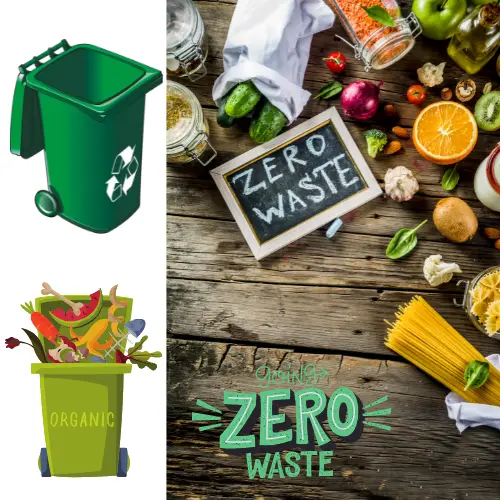What we eat today often has to travel thousands of miles to reach our plates, and much of that journey involves storing food in environments that are not ideal. This means that, unfortunately, some parts of your food will spoil before you have the chance to enjoy them. In this article, we’ll explain why food spoilage happens and the different stages of spoilage, along with simple tips you can use to prevent food from spoiling at home.
An overview of waste, food spoilage and microbiology
Waste is any material that is discarded after primary use. There are two types of waste; biodegradable waste or non-biodegradable waste, also known as trash or garbage. Biodegradable materials are organic and carbon based, such as food waste, paper products and textiles. Non-biodegradable wastes are substances such as chemicals, metals, glass and plastic. Food spoilage refers to food that has either deteriorated from improper handling, packaging or storage after harvest or been contaminated by bacteria or moulds at some point during its life cycle . Microbiology is a field of science focused on microscopic organisms , which may be unicellular (one cell) organisms like bacteria or multicellular (many cells) eukaryotes including animals, plants etc.
Relationship between food waste and food security
There is a strong relationship between food waste and food security. One of every nine people around in world suffer from chronic hunger (UN, 2016). The Food and Agriculture Organization of United Nations has estimated that there are around 1.3 billion tons of wasted food annually (FAO, 2014). It has been estimated that each year in US alone approximately 133 billion pounds of food ends up as waste at an economic loss of $162 billion.
The problem of food waste
Although food is being lost in almost every step of its production, we tend to only think about how much food is wasted by consumers. Because we can see and measure how much food is thrown away, it seems logical that if we could just get consumers to stop wasting so much food, then there would be enough for everyone. However, when we take a closer look at each stage of production, along with transportation, we realize that 40% of all food globally goes to waste before reaching our plates. In fact, over 60% of fruits and vegetables are never harvested due to aesthetic standards or because they don’t meet other quality standards. The amount of energy required to produce food that ends up going to waste is astounding—we’re talking about 1/3 of all agricultural land on Earth. And if that isn’t bad enough, remember that food waste also has an impact on climate change; between 25-30% of total global greenhouse gas emissions come from agriculture.
The causes of food waste
Food is lost in its production, harvesting, processing, retailing, distribution and consumption phases. In fact, agriculture itself accounts for up to 30% of food wasted globally. With regards to supermarkets alone, each year billions of dollars worth of nutritious food is left on fields or discarded because produce does not meet aesthetic standards set by consumers. When goods leave supermarkets, a lot more food still ends up in landfills than is eaten (about 40% overall), thus contributing to greenhouse gas emissions as well as environmental degradation – particularly because most landfills are poorly designed. Some studies have found that methane emission from decomposing organic materials like food are 21 times more potent than carbon dioxide in trapping heat in our atmosphere over 100 years after they’re emitted.

Tricks to make your produce last longer
Preventing food from spoiling starts before you even get home. When shopping, plan your meals for that week to make sure you’re not buying more than you need—or paying for more food than will be eaten. Store your produce properly at home, too. Certain fruits and vegetables go bad quicker than others, but even so, there are a few quick tips to help them last longer in your fridge or pantry. Learn how to store various produce types below! You might be surprised by just how long they’ll keep fresh with these simple tricks. You could also save money on groceries by growing some of your own food in an urban garden. Find out which plants grow best in small spaces with our handy guide. Don’t have any space? Even if you live in an apartment, there’s still plenty of room to grow herbs on windowsills or tiny succulents indoors. Gardening is fun and rewarding, plus when it comes time to eat your homegrown goodies, they’ll taste that much better knowing you took such good care of them from seed all the way through harvest!

